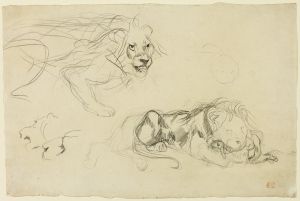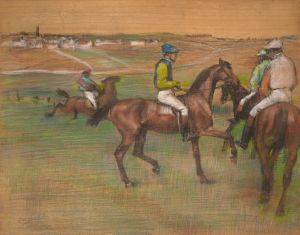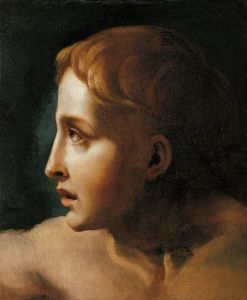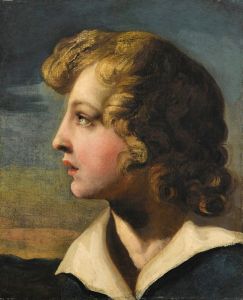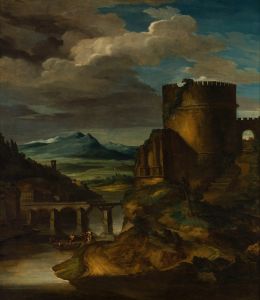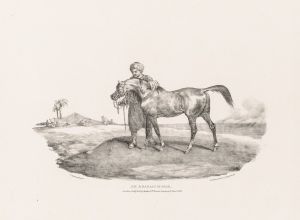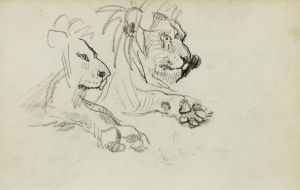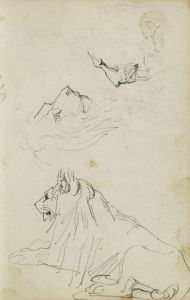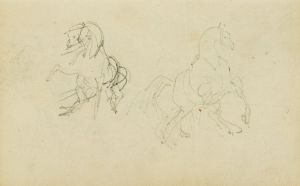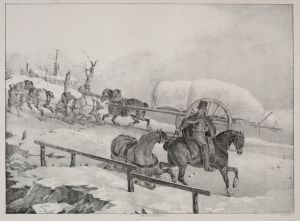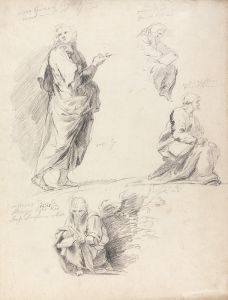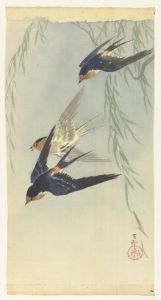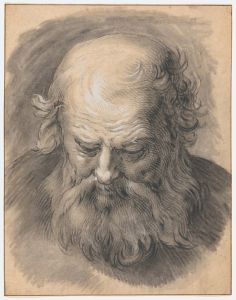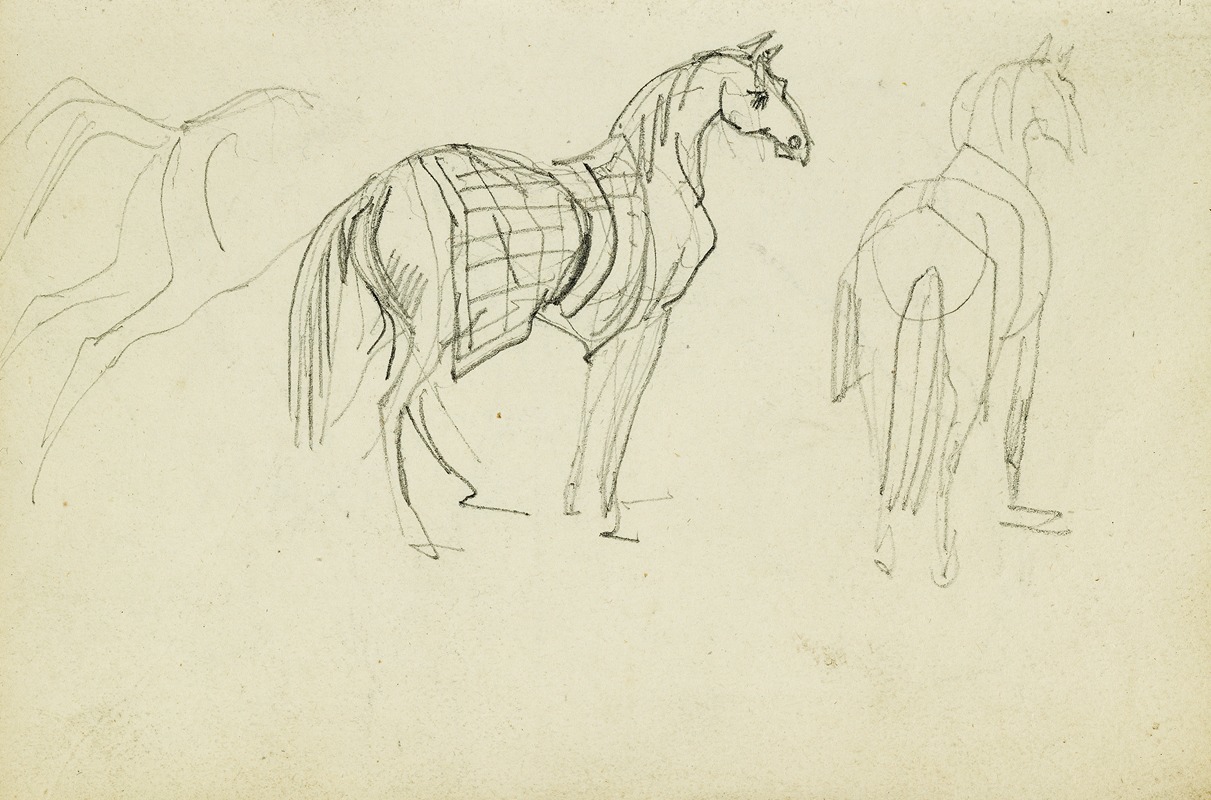
Three horse studies
A hand-painted replica of Théodore Géricault’s masterpiece Three horse studies, meticulously crafted by professional artists to capture the true essence of the original. Each piece is created with museum-quality canvas and rare mineral pigments, carefully painted by experienced artists with delicate brushstrokes and rich, layered colors to perfectly recreate the texture of the original artwork. Unlike machine-printed reproductions, this hand-painted version brings the painting to life, infused with the artist’s emotions and skill in every stroke. Whether for personal collection or home decoration, it instantly elevates the artistic atmosphere of any space.
Théodore Géricault's Three Horse Studies is a notable work by the French Romantic painter, renowned for his dynamic and expressive depictions of animals, particularly horses. Géricault (1791–1824) was deeply fascinated by equine subjects, which he frequently explored in his art. This particular piece, as the title suggests, features three studies of horses, showcasing the artist's keen observational skills and mastery in capturing the anatomy and movement of these animals.
The artwork is a study rather than a finished composition, reflecting Géricault's process of closely examining his subjects to understand their physicality and behavior. The piece demonstrates his ability to render horses with remarkable precision and vitality, qualities that became hallmarks of his work. Géricault's interest in horses was not merely artistic; he was also an accomplished horseman, which likely contributed to his deep understanding of their form and motion.
Three Horse Studies is executed with a focus on anatomical accuracy, emphasizing the musculature and posture of the animals. The studies may have been preparatory sketches for a larger work or simply an exercise in refining his technique. Géricault often used such studies to inform his larger compositions, including his equestrian portraits and battle scenes.
The medium of the work is believed to be either pencil, ink, or chalk, as Géricault frequently employed these materials for his sketches. The simplicity of the medium allows the viewer to focus on the raw energy and detail of the horses, unencumbered by elaborate backgrounds or additional elements. The piece reflects the Romantic era's emphasis on emotion, movement, and the sublime, qualities that Géricault infused into even his preparatory works.
While the exact date of creation for Three Horse Studies is not definitively documented, it likely falls within the period of Géricault's career when he was intensely studying horses, particularly in the 1810s. This was a time when he produced several equestrian-themed works, including his famous painting The Charging Chasseur (1812) and numerous sketches of horses in motion.
Géricault's fascination with horses can also be linked to the broader Romantic movement, which often celebrated the untamed power and beauty of nature. His equine studies, including Three Horse Studies, remain a testament to his dedication to capturing the essence of his subjects with both technical skill and emotional depth.
Today, Three Horse Studies is appreciated as an example of Géricault's artistic process and his enduring legacy as one of the foremost painters of the Romantic era. The work is often studied alongside his other equestrian pieces to gain insight into his approach to form, movement, and the Romantic ideals that shaped his art.






